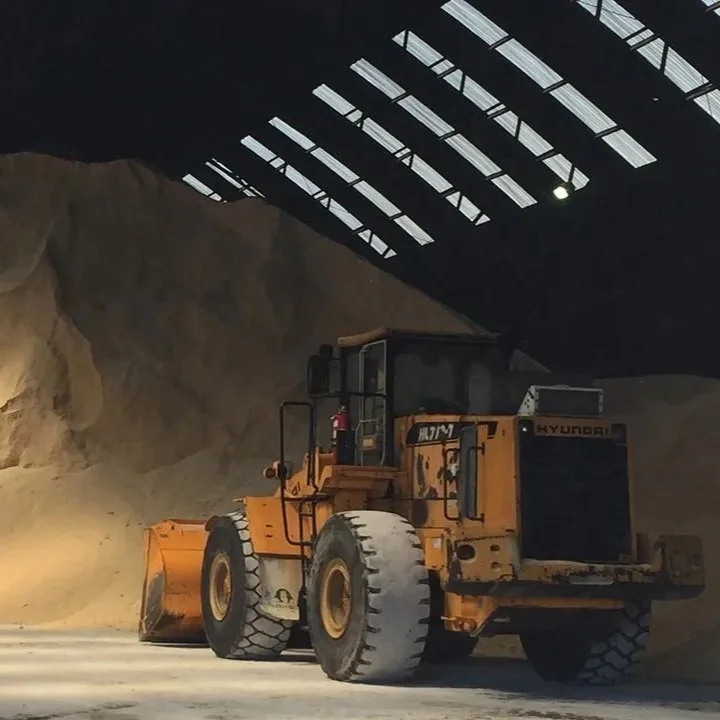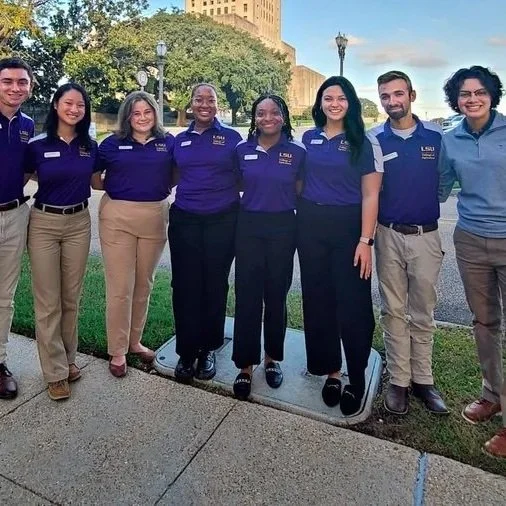This month’s 2025/26 U.S. corn outlook calls for smaller supplies, domestic use, and ending stocks. USDA cut corn beginning stocks by 25 million bushels to 1.3 billion, reflecting an increase in exports that is partly offset by lower feed and residual use for 2024/25. Feed and residual use is down 75 million based on indicated disappearance in the June 30th Grain Stocks report. Exports are raised 100 million bushels to 2.8 billion based on current outstanding sales and shipments to date and, if realized, would be record high.
Read MoreIn the sports world, a hat trick refers to one player scoring three goals in a single game. LSU AgCenter researcher Christine Coker has big goals in mind as she wears three hats, one being Louisiana’s new state vegetable specialist.
Read MorePresident Trump signed H.R. 1 also known as the “One Big Beautiful Bill (OBBB) Act” on July 4, 2025. The OBBB Act contains a much-needed update to commodity and crop insurance programs- with some of those improvements beginning with the 2025 crop year. However, the agricultural-related provisions of the OBBB Act extend beyond the farm safety net to include several tax-related benefits for farm operations. This report highlights selected provisions of the OBBB Act.
Read MoreSugarcane varieties are the lifeblood of the Louisiana sugar industry. Therefore, variety selection is one of the most important decisions on the farm — a decision with long-term consequences. The goal is to maximize profitability on every acre of the farm for each year of a long crop cycle.
Sugarcane variety choices for planting in 2025 are many. L 01-299 and HoCP 14-885 will continue to be widely planted by producers across the Louisiana sugar industry. L 15-306 and HoL 15-508, new variety releases from 2022, should occupy a moderate portion of your planting acreage because of excellent stubbling ability and yield potential.
Read MoreWinter annual forages are adapted for grazing, green chop, hay, and silage production in Louisiana. Each year, scientists at the Louisiana State University Agricultural Center conduct performance trials to evaluate the forage production of annual ryegrass, small grain forage, and legume forage varieties. Trials are conducted at various Louisiana State University Agricultural Center research stations throughout the state to provide information on the performance of varieties under varying soil and climatic conditions.
Read MoreThe LSU AgCenter Hammond Research Station will host its annual horticulture field day July 18.
Visitors will hear from experts about their research endeavors and have the chance to see an array of plants during a tour of the station’s sprawling trial gardens.
Read MoreFor the third year in a row, members of the Louisiana 4-H Shooting Sports Team are reigning national champions after defeating competitors from across the United States.
The team has placed first in five out of the past six national competitions, including 2019, 2021, 2023, and 2024 with a second-place finish in 2022 and the 2020 event being canceled due to COVID restrictions.
Read MoreSixteen Baton Rouge-area students and educators recently completed the second annual Camp CRISP, a two-week experiential learning program hosted by the LSU AgCenter as part of the Climate Resilient Innovations for Sustainable Production of Rice (CRISP Rice) grant.
Read MoreThe USDA recently released its annual Acreage Report which provides markets with a more accurate idea of spring planting progress and what potential supply implications may be in store for the 2025 crop year. On the demand side, USDA also released its Quarterly Grain Stocks report which shows usage rates between March 1, 2025 and June 1, 2025. These changes in supply levels will impact 2024/25 ending stocks and 2025/256 beginning stock levels which will subsequently be reflected in the July report.
Read MoreLike many other agricultural sectors, there has been consolidation in United States (US) farm-level sugar production. Sugar is a unique commodity because about 56% of the domestic production of sugar originates from sugarbeets and 44% originates from sugarcane.
The US domestic production of sugar has increased from 8.02 million short tons raw value (STRV) in 1997 to 9.31 million STRV in 2024, an increase of 16%.
Read MoreFor the past seven years, the LSU AgCenter has been sponsoring Seeds to Success: The Louisiana Farm to School Program, which works directly with teachers and educates them on how to grow a garden at school. The program, open to teachers of all grades and ages, prepares them to integrate their gardens into their lesson plans.
Read MoreThe LSU AgCenter will hold a watermelon field day on Wednesday, July 2, at the Sugar Research Station, 5755 LSU Ag Road in St. Gabriel.
AgCenter agriculture and natural resources, 4-H and nutrition and community health agents will be present at booths with garden, cooking and activity demonstrations. They will be available to answer any questions you may have about growing and preparing the delicious summertime treat.
Read MoreFor the third consecutive year, the Louisiana State University (LSU) Les Voyageurs club earned the top prize in the Animal Agriculture Alliance’s 2024 College Aggies Online (CAO) scholarship program. During the nine-week program, club members host 10 College Aggies events to inform students and community members about agriculture.
Read MoreAs rice harvesting in south Louisiana gears up for mid-July, experts are weighing in on the outlook for Acadiana farmers. Despite challenges like excessive rain and political influences, there is optimism in the air.
Peter Bachmann from the USA Rice Federation believes Louisiana's rice industry remains healthy. Ronnie Levy, a Louisiana rice specialist with the LSU AgCenter, echoed this sentiment, stating, "The rice crop looks good."
Read MoreLouisiana's rice crop is progressing well despite some early weather challenges. This update was shared at the 116th Annual Rice Field Day held at LSU's Rice Research Station in Crowley on Tuesday, June 24.
During the event, rice growers received insights from LSU AgCenter experts on improving rice production, including pest management strategies. The AgCenter reported that more than 461,000 acres of rice are cultivated in the state.
Read More












